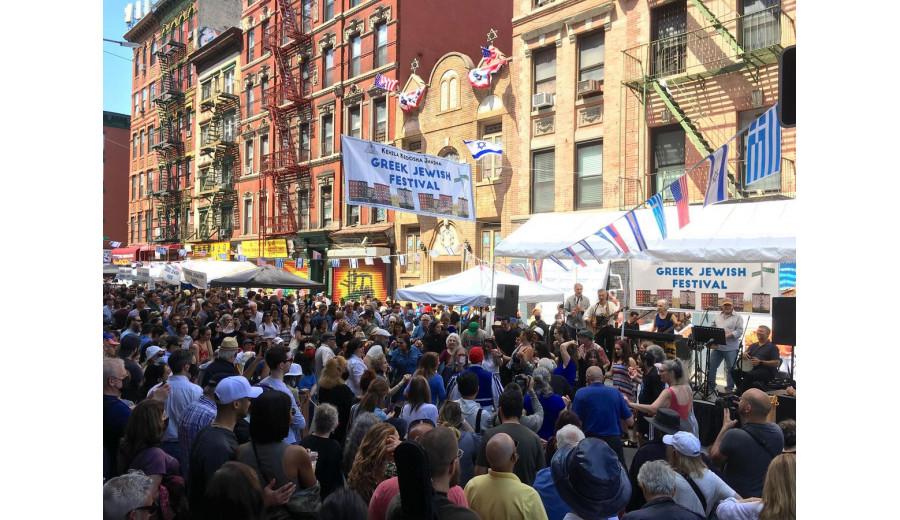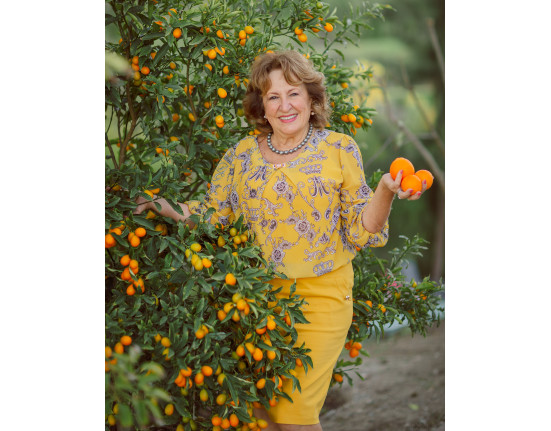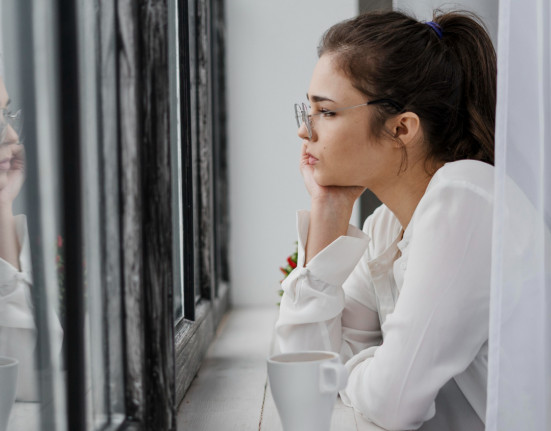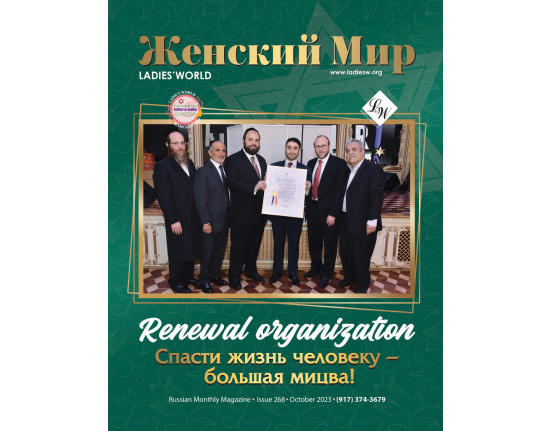On
May 21 our Bukharian Jewish Women book club visited a very exciting Greek
Jewish festival which was held between Allen St. and Eldridge St. in the Lower
East side of Manhattan. It was hosted by
Kehila Kedosha Janina synagogue and museum.
This
synagogue is housed in a small building that combines elements of Classical and
Moorish architecture. The two-story building is constructed of buff-colored
brick with cast stone detailing with a modest peaked parapet that subtly
creates the effect of corner towers. The cast stone tablets of the Ten
Commandments are placed above the entrance and stained-glass windows.
Unfortunately, due to the high demand we could not go inside the synagogue to
explore the interior. But we learned some of its fascinating history.
Kehila Kedosha Janina synagogue is the only
Romaniote synagogue in the Western Hemisphere. Romaniote Jews are a
unique community of Jewish people whose history in Greece dates back over two
thousand three hundred years to the time of Alexander the Great. The Romaniotes
are historically distinct from the Sephardim, who settled in Greece after the
expulsion of the Jews from Spain in 1492. The
congregation was founded in 1906 by Greek Jewish immigrants from Ioannina, but the synagogue itself was not erected
until 1927. At present Kehila Kedosha Janina is one of
only a handful of active synagogues that remain on the Lower East Side.
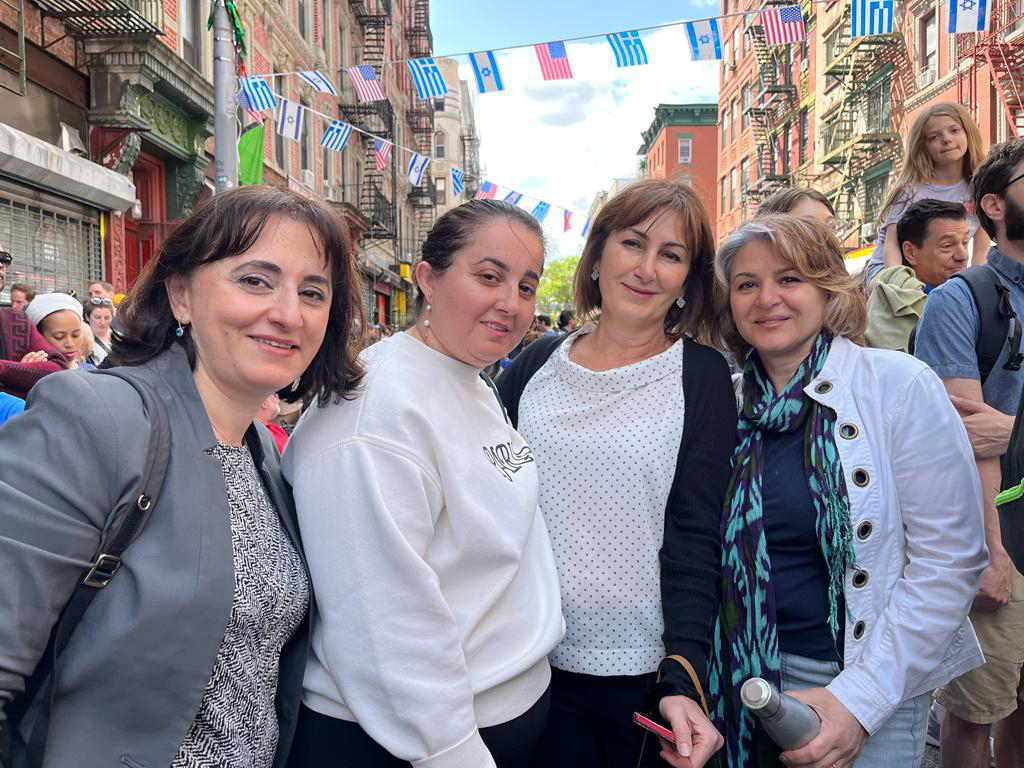
The
eighth Greek Jewish festival demonstrated the rich culture, which is held by
the Greek Jews, showing their colorful costumes, fast paced dancing, delicious
kosher Greek food including Spanakopita (spinach and cheese filled pastry),
Greek salad, and Baklava. We enjoyed some delicious treats. The street was
overflowing with visitors celebrating life, culture, music, and food. One of
the highlights of the festival was the appearance of the NYC mayor Eric Adams.
In his short speech he said: “Our diversity is our secret weapon. That is who
we are, and this is how we come together to celebrate our diversity and rich
culture”. He also thanked the organizers of the event for preserving and
sharing their culture.
We
also browsed through many books which covered history of the Greek Jews and
their Legacy. You could also get henna
hand painting, buy beautiful souvenirs including Greek extra virgin olive oil, Murano
glass Judaica.
Then
our group took a short walk to another old and beautiful synagogue, the
Eldridge Street Synagogue and Museum. This synagogue truly took our breath away
by its architectural and aesthetic beauty. The building is an interesting
combination of the Gothic, Romanesque, and Moorish styles built with a
combination of brick, terra cotta and stone. The Eldridge synagogue interior is
even more stunning, featuring a 50-foot barrel-vaulted ceiling, brass
chandeliers, dozens of Gothic stained-glass windows, and hand-stenciled walls. It
also displays a monumental stained-glass window by artist Kiki Smith and
architect Deborah Gans. The window echoes the field of stars found on the
walls, where the light activates them, and makes them shine during daytime. There
is also a unique exhibit of Menorahs from around the world, which has
captivated us with its variety and beauty.
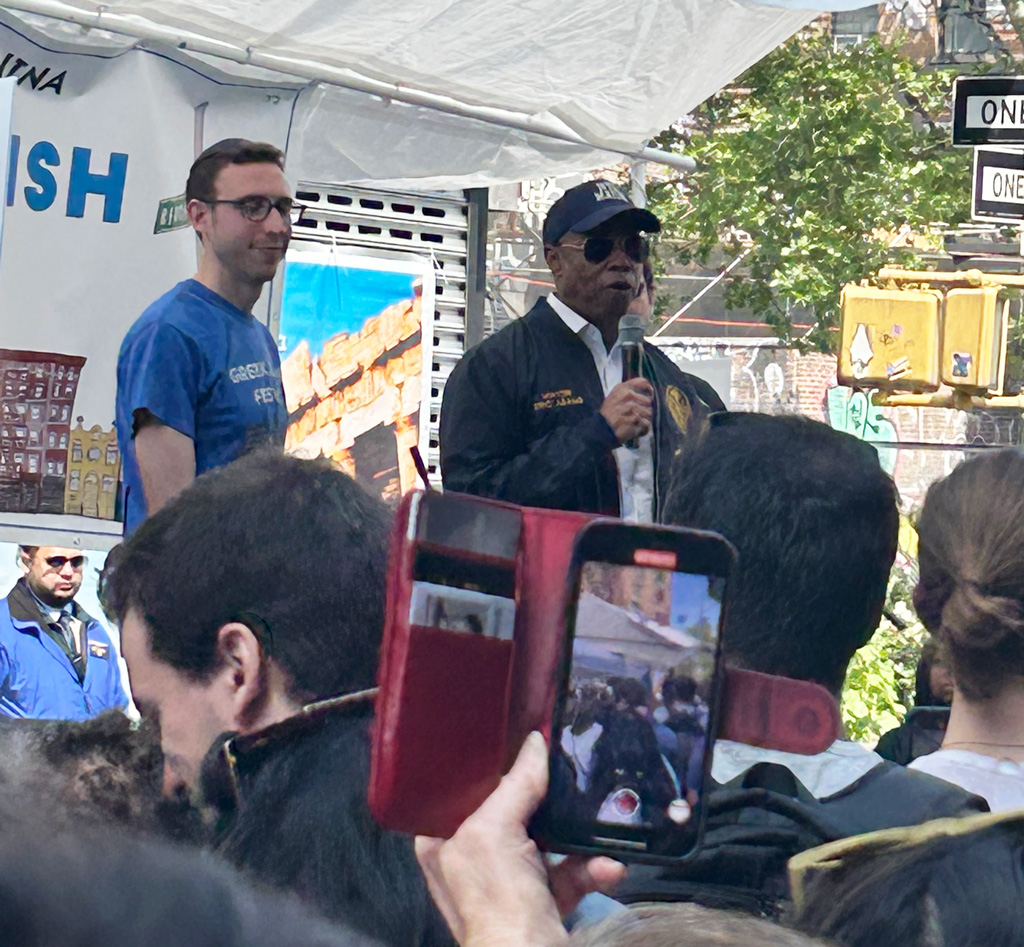
We were given a guided tour of the synagogue and learned a
lot about the history of the Lower East side, Eastern European Jews, as well as
the synagogue itself, which made us appreciate it even more.
The synagogue was built in 1887, during a period of mass immigration to the United States. From 1880 – 1924 more than 2.5 million Jews came to the USA and approximately 65 percent of them settled on the Lower East Side. Very quickly the Lower East Side became the most densely populated Jewish community on the planet. The magnificent building provided an inspiring contrast to the crowded streets, tenements, factories and shops of the Lower East Side. For fifty years, the Eldridge Street synagogue flourished.
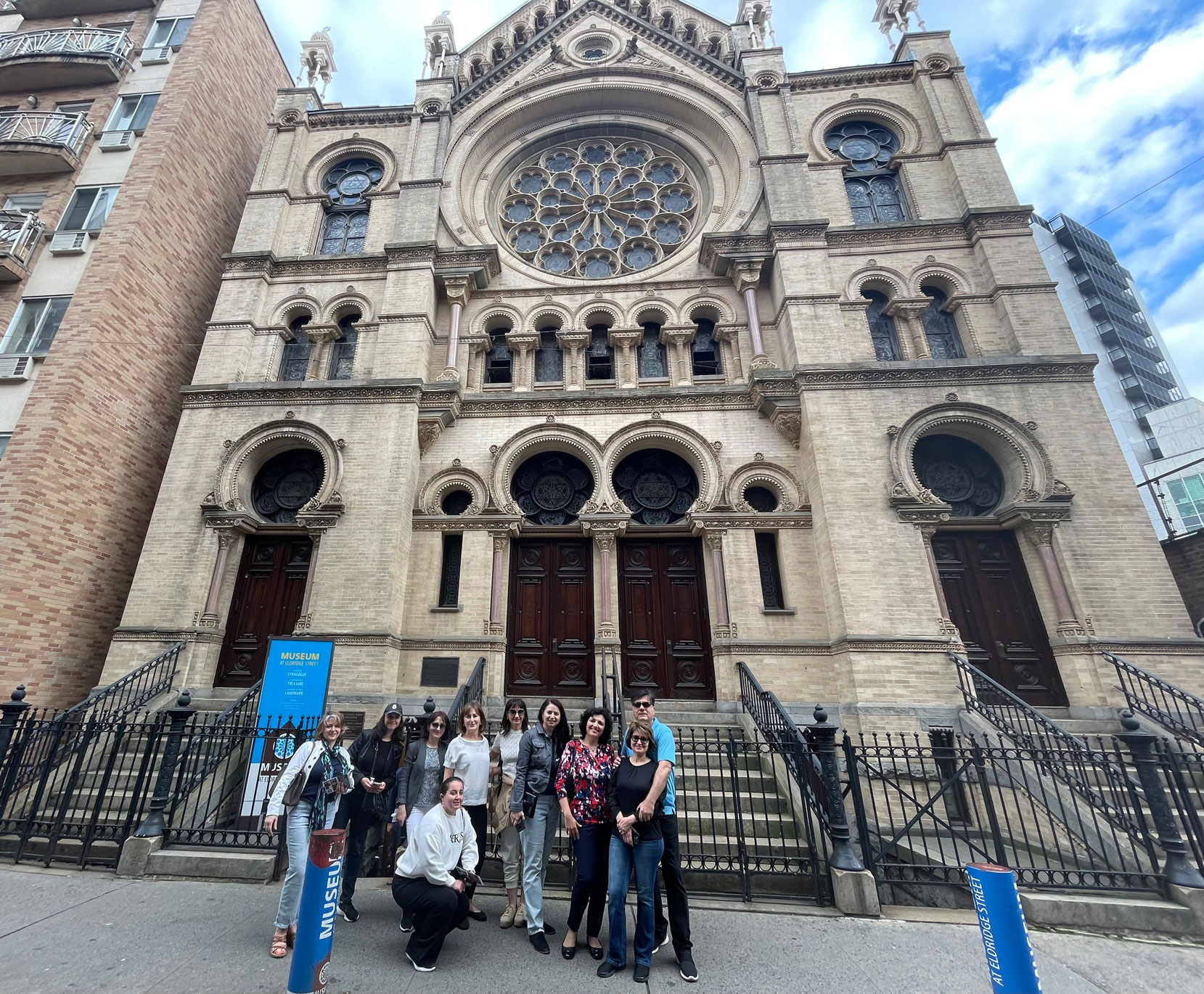 The
synagogue began to decline following the introduction of the 1924 Immigrant
Quota Laws. That new policy, combined with increasing exodus to outer boroughs,
caused a sharp and steady decline in the population of the Jewish Lower East
Side. The building of the synagogue
slowly deteriorated. In 1980 the
building was designated a National Historic Landmark and in 1986 a 20 year multi-million-dollar
restoration project of the building started.
In December 2007 the renovation project was finally completed, and the
building was rededicated as The Museum at Eldridge Street. It has been open to visitors since then.
The
synagogue began to decline following the introduction of the 1924 Immigrant
Quota Laws. That new policy, combined with increasing exodus to outer boroughs,
caused a sharp and steady decline in the population of the Jewish Lower East
Side. The building of the synagogue
slowly deteriorated. In 1980 the
building was designated a National Historic Landmark and in 1986 a 20 year multi-million-dollar
restoration project of the building started.
In December 2007 the renovation project was finally completed, and the
building was rededicated as The Museum at Eldridge Street. It has been open to visitors since then.
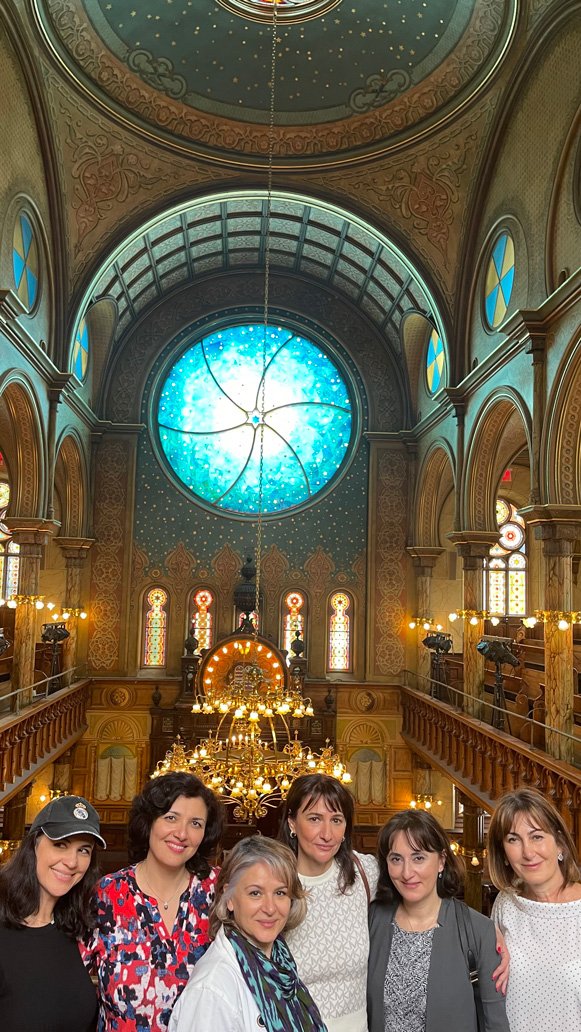
It is always amazing to be a tourist in your own city,
discovering history, architecture, art, and culture and learning more about the
people and their lives in the past and present. It is especially pleasant to do
this with a group of people that you share common interests with. We are
grateful to our book club, which united us and is encouraging us to expand our
horizons and broaden our knowledge.
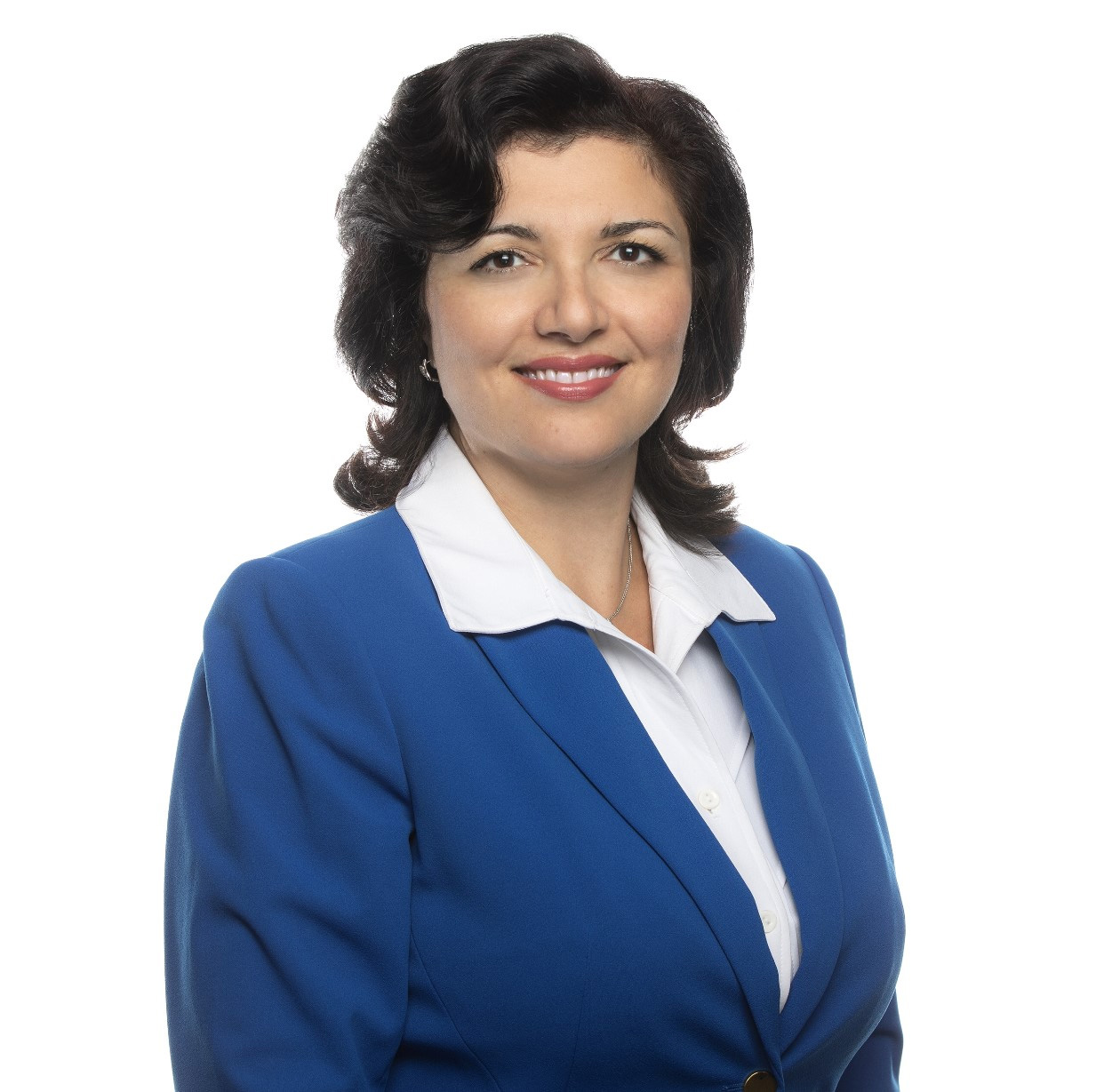 Elena Levy
Elena Levy

